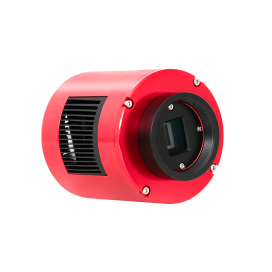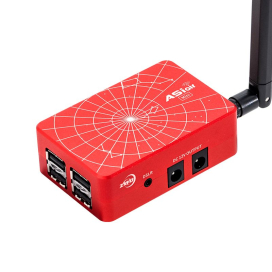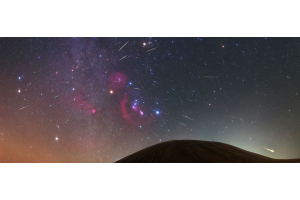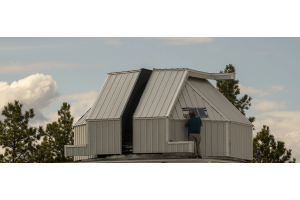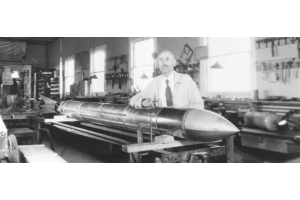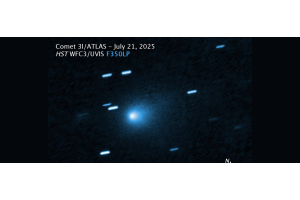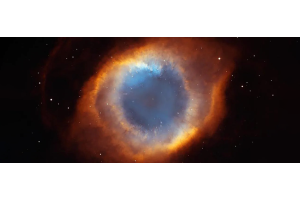
Astrophotography has long been seen as a niche hobby reserved for those with deep pockets and high-end equipment. However, recent advances in technology and a growing community of amateur astronomers have made it possible to capture stunning celestial images without breaking the bank. Budget astrophotography is not only accessible but also a rewarding way to engage with the universe, allowing enthusiasts to explore the night sky and share their discoveries with others. With careful planning and the right choices, anyone can embark on their astrophotography journey without the need for exorbitant spending.
In the age of digital technology, the barriers to entry in astrophotography have significantly lowered. Affordable equipment, software advancements, and online communities have given newcomers the ability to produce impressive images of the cosmos. Whether you are interested in photographing planets, nebulae, or star clusters, there are cost-effective solutions available that do not compromise on quality. By focusing on essential gear, learning basic techniques, and leveraging online resources, you can start capturing the beauty of the universe from your own backyard.
Budget Friendly Telescope Mounts
A stable mount is crucial in astrophotography as it ensures that your camera or telescope remains fixed on your target, allowing for clear and detailed images. Unstable mounts can lead to blurry photos and frustrating experiences, especially for beginners who might be deterred by the lack of success. Small, flimsy mounts often struggle to keep equipment steady, particularly during long exposure shots where even minor movements can ruin an image. To enhance stability, consider using a camera bag filled with weights or sand hung from the center of the tripod to lower the center of gravity. Investing in a heavier tripod can also make a significant difference, providing a more robust foundation that can handle the weight of your gear. Additionally, using vibration pads under the tripod legs can help absorb any vibrations from the ground, ensuring a steadier setup. By focusing on mount stability, beginners can significantly improve their astrophotography results and enjoy a more satisfying experience capturing the night sky. Below are some examples of budget-friendly astrophotography mounts that you should consider.
iOptron Skyguider Pro Camera Mount -

First on the list is the iOptron SkyGuider Pro Camera Mount. One of its standout features is its compact design, making it small enough to fit in the palm of your hand. This makes it perfect for airline travel and backpacking, allowing photographers to take their astrophotography gear to remote and dark sky locations with ease. Its lightweight build, combined with an integrated rechargeable battery that offers up to 20 hours of operation, ensures that you won't be burdened by heavy, cumbersome equipment or frequent power recharges during extended sessions. While the SkyGuider Pro lacks the GoTo functionality found in more expensive mounts, its ease of polar alignment via the iOptron iOS app and the illuminated polar scope make setting up for a night's shoot straightforward, even for beginners. This mount offers reliable and silent tracking, crucial for capturing long-exposure shots without vibration or noise interference. Although it doesn't support automated object finding, its affordability, portability, and low power consumption make it an ideal choice for those who value mobility and simplicity. The SkyGuider Pro strikes an excellent balance between cost and performance, providing amateur astrophotographers with the tools needed to achieve impressive results without a significant financial investment.
Sky-Watcher Star Adventurer 2i Mount Photo Package -

The Sky-Watcher Star Adventurer 2i is an exceptional budget-friendly option for astrophotographers seeking a versatile and portable tracking mount. Its compact and lightweight design, weighing just 2.2 pounds, makes it ideal for travel, easily fitting into a backpack for trips to remote locations. The built-in polar scope with an illuminator allows for precise alignment, ensuring accurate tracking of celestial objects. One of the key advantages of the Star Adventurer 2i is its low power consumption, capable of up to 72 hours of continuous tracking with four AA batteries, making it highly reliable for extended sessions without the need for frequent battery changes. While the Star Adventurer 2i also lacks the GoTo functionality found in more advanced mounts, it compensates with user-friendly features that cater to both beginners and experienced astrophotographers. The integrated Wi-Fi and free Star Adventurer app provide convenient control over the mount, including pre-programmed settings for night sky photography, time-lapse, and even solar and lunar tracking. Its stable tracking, ease of use, and robust build make it an excellent choice for those prioritizing portability and simplicity. The ability to support various photography modes, including star-scape and time-lapse, further enhances its value, providing a comprehensive tool for capturing the beauty of the night sky without a significant financial investment.
Budget Friendly Cameras
ZWO ASI 585MC Pro Cooled -
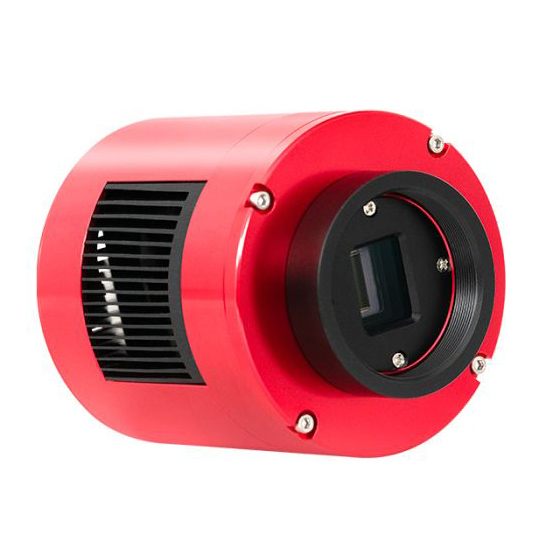
The ZWO ASI585MC Pro camera is an excellent budget-friendly option for astrophotographers due to its impressive features and affordability. Equipped with a Sony IMX585 backlit sensor, this camera captures stunning images with high sensitivity, making it perfect for both deep space and planetary objects. The small sensor size of 2.9 microns is well-suited for use with camera lenses and short focal length telescopes, allowing for detailed and wide-field images. One of the standout features of the ASI585MC Pro is its built-in cooling system, a unique feature for a camera in this price range, which significantly reduces noise and enhances image clarity by cooling the camera to 35 degrees below ambient temperature. Additionally, the ASI585MC Pro offers compatibility with various 1.25" filters, including some narrowband filters like the Optolong L-eNhance, enabling users to achieve higher-quality images of nebulae even in less-than-ideal conditions. Its low readout noise, high quantum efficiency, and large full well capacity ensure that every photon captured is effectively utilized to produce vivid, detailed images.
QHY183C Color Cooled CMOS Camera -
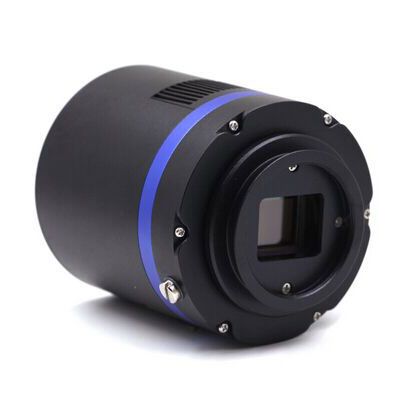
Another option you may wish to consider is the QHY183C, offering impressive features and capabilities for its price range. Equipped with the back-illuminated Exmor R Sony IMX183 sensor, the QHY183C boasts a higher sensitivity and quantum efficiency compared to traditional front-illuminated designs. This sensor's slightly larger size, with an active array of 5544 x 3694 pixels at 2.4 microns each, allows it to capture more objects within the same field of view compared to cameras like the ZWO ASI585MC Pro. This makes the QHY183C ideal for wide-field astrophotography, providing detailed images of expansive celestial scenes.
One of the standout features of the QHY183C is its advanced cooling system, which includes two-stage TEC cooling and temperature regulation that can cool the camera down to -40°C below ambient. This cooling capability, combined with the anti-dew technology, ensures that the sensor and sensor window remain dry and fog-free, even on humid nights. The camera also features a built-in 128MB DDRII image buffer to safeguard against data transmission drops and ensure smooth video capture. Additionally, the QHY183C incorporates an anti-amp light control circuit to significantly reduce amplifier glow, a common issue in long-exposure astrophotography. With its ability to produce 4K HD video at 25 frames per second and full-resolution output at 15 frames per second, the QHY183C is a versatile and powerful tool for capturing stunning images and videos of the night sky.
Camera Controlling Computers
ZWO ASIAIR Mini -

Of course, none of these cameras would be able to be controlled without some sort of computer to run the imaging sequence, cooler, etc. One such example on the budget-friendly side of this is the ASIAIR Mini – an excellent budget-friendly astrophotography controller that simplifies the image capture process from start to finish, making it ideal for both beginners and experienced astrophotographers. This compact, lightweight device is made from durable CNC machined aluminum, ensuring it is dew and dust-resistant. Its small form factor, being 42% smaller and 21% lighter than the ASIAIR Plus, makes it easy to transport and set up, reducing the payload on your mount and tripod. The device allows wireless control of DSLR or ASI, like the ZWO ASI 585MC Pro camera, through a phone or tablet, enabling comfortable remote imaging from various locations. The updated mobile app enhances functionality by supporting more cameras, improving user experience, and optimizing features.
Despite its compact size, the ASIAIR Mini offers ample connectivity with multiple 12V DC outputs to power your camera’s cooler and four USB 2.0 ports for accessories, a DSLR shutter release port, and a USB-C port for wired PC connectivity. The app provides advanced power monitoring, displaying real-time data on temperature, voltage, current, connected devices, and total power consumption. However, the ASIAIR Mini is locked into the ZWO ecosystem, primarily supporting ZWO cameras and accessories, which may limit compatibility with non-ZWO equipment. Nonetheless, its robust features, ease of use, and affordability make it an excellent choice for those starting in astrophotography or looking for a portable and efficient control solution.
Telescopes
Askar FMA180 Pro Refractor -
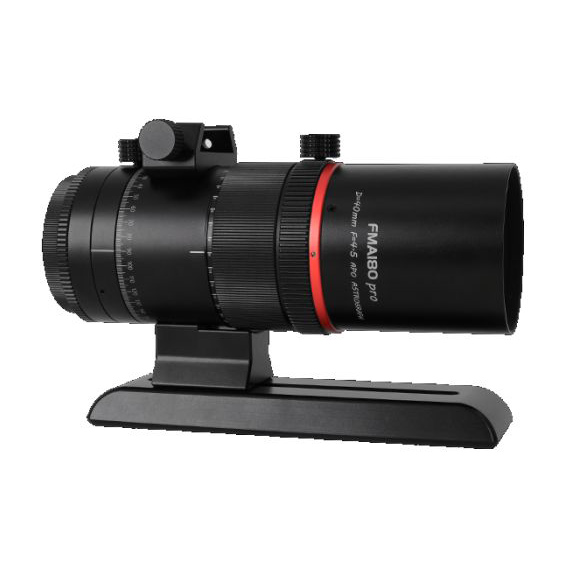
The Askar FMA180 Pro is a phenomenal astrophotography telescope for someone on a budget. Featuring a sextuplet 3+3 lens configuration with APO design, including two ED glass elements, it effectively minimizes chromatic aberration for crisp, clear images. With a focal length of 180mm and a fast focal ratio of f/4.5, this telescope excels in wide-field astrophotography, making it an ideal match for cameras like the QHY183C and ZWO ASI 585MC Pro. Its short focal length ensures a favorable pixel scale, maximizing detail and resolution in images. Lightweight and equipped with essential accessories like a finder base and 360-degree rotator, the FMA180 Pro is perfectly suited for pairing with star trackers such as the iOptron SkyGuider Pro or Sky-Watcher Star Adventurer. Its built-in M48 adapter and 2" filter thread eliminate the need for additional accessories to achieve a flat field of view, simplifying setup and enhancing portability, although you would need to use an M48-M42 adapter to use it with the aforementioned cameras mentioned in this article. In addition to cooled astrophotography cameras, this would also work great with DSLRs with an M48 adapter.
Apertura 60mm FPL-53 Doublet Refractor and 2” Field Flattener -
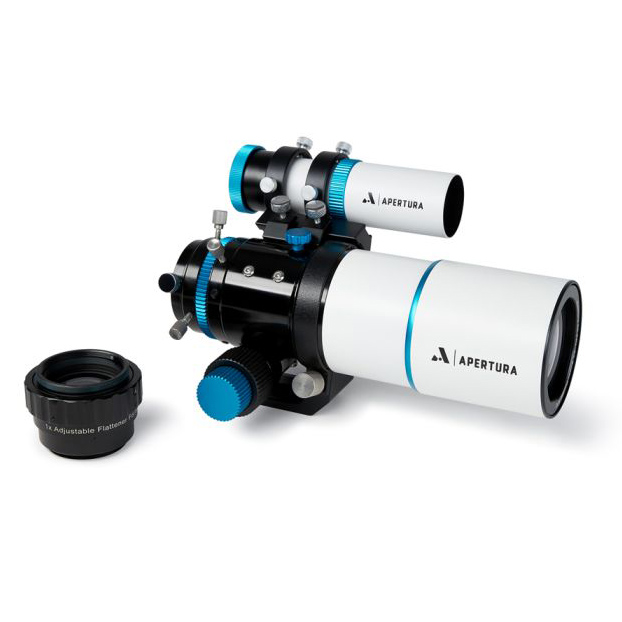
The Apertura 60EDR is a 60mm doublet refractor telescope, which, while not providing the pin-sharp star images of triplet designs, still offers excellent optical performance. Its glass is of high quality, and the dual-speed Crayford focuser ensures smooth and precise focusing, which is essential for astrophotography. This makes it a great budget-friendly option at around $600, particularly for those using star trackers like the iOptron SkyGuider Pro or Sky-Watcher Star Adventurer. The lightweight and compact design enhances its portability, making it easy to travel with and mount on a variety of setups.
The telescope package includes an adjustable field flattener to ensure a flat photographic field, a 32mm guide scope for easier targeting, and an array of accessories for versatile use. The adjustable flattener supports full-frame cameras and is threaded to accept 2" filters, eliminating the need for additional accessories for a flat field of view. The guide scope has a helical focuser and can attach to standard and mini form factor cameras, adding to the setup's versatility. Make no mistake, despite being a doublet refractor, this telescope's compact size, high-quality optics, and included accessories make it an attractive option for budget-conscious astrophotographers looking for a capable and portable solution.
Post-Processing Utilities
GraXpert
In the age of AI, astrophotography is quickly finding its footing. GraXpert is a free and open-source software designed to remove gradients from your images. Gradients are unwanted changes in brightness caused by factors such as light pollution, incorrect or missing flat correction, natural brightness gradients of the night sky, or optical peculiarities like vignetting. Removing these gradients is essential for deep-sky photos as it enhances their appearance and simplifies further processing. This process can also eliminate color casts and reduce sky background interference. GraXpert operates as a standalone program, not as a plug-in for other software. Once your images are processed with GraXpert, you can export them and continue editing in any post-processing photo editor, whether free or paid.
Here’s an example of a picture of the Milky Way in a Bortle 4 zone before application with GraXpert compared the same picture after GraXpert has been applied!
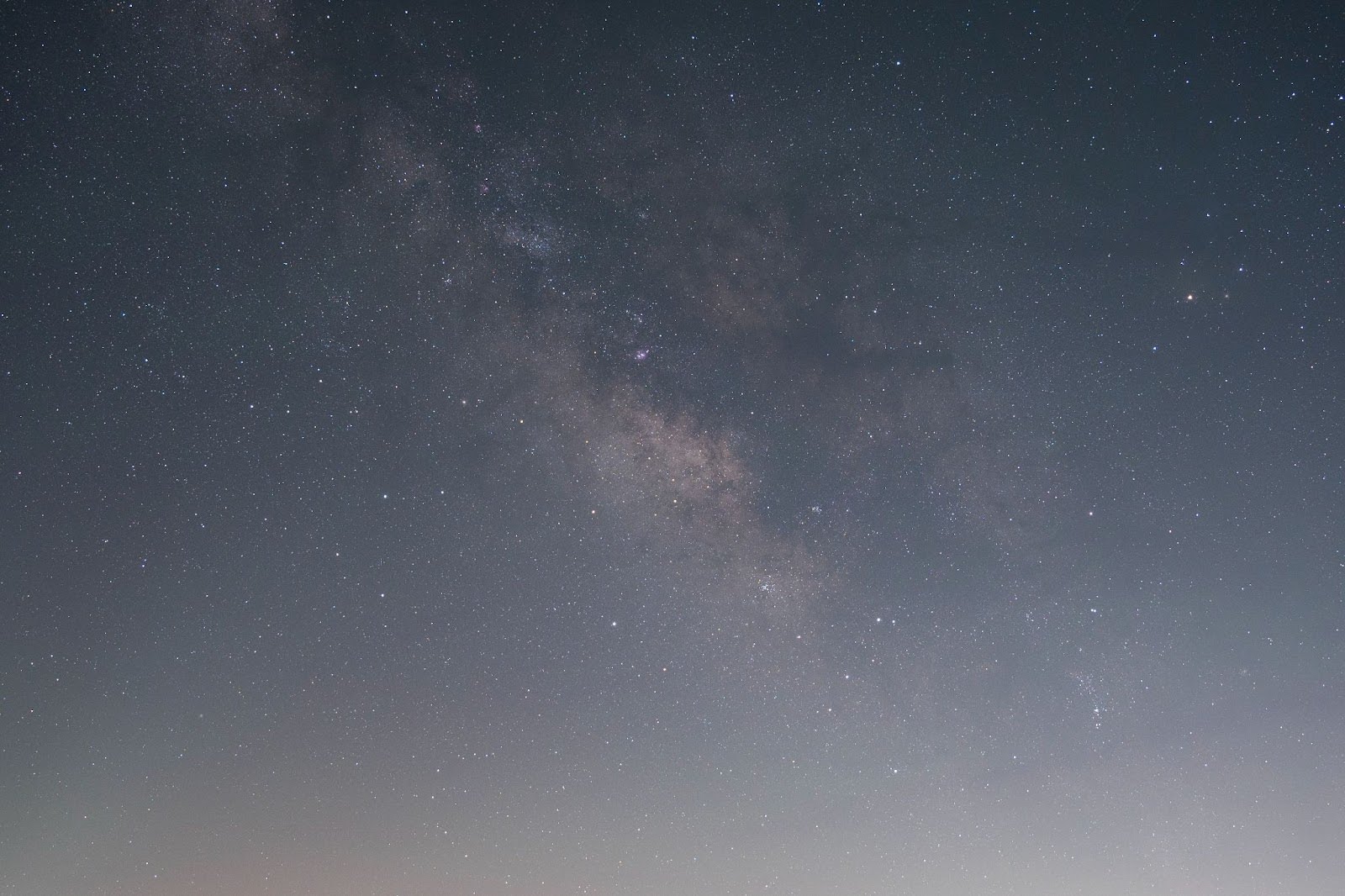 Before GraXpert
Click to Enlarge Image
Before GraXpert
Click to Enlarge Image
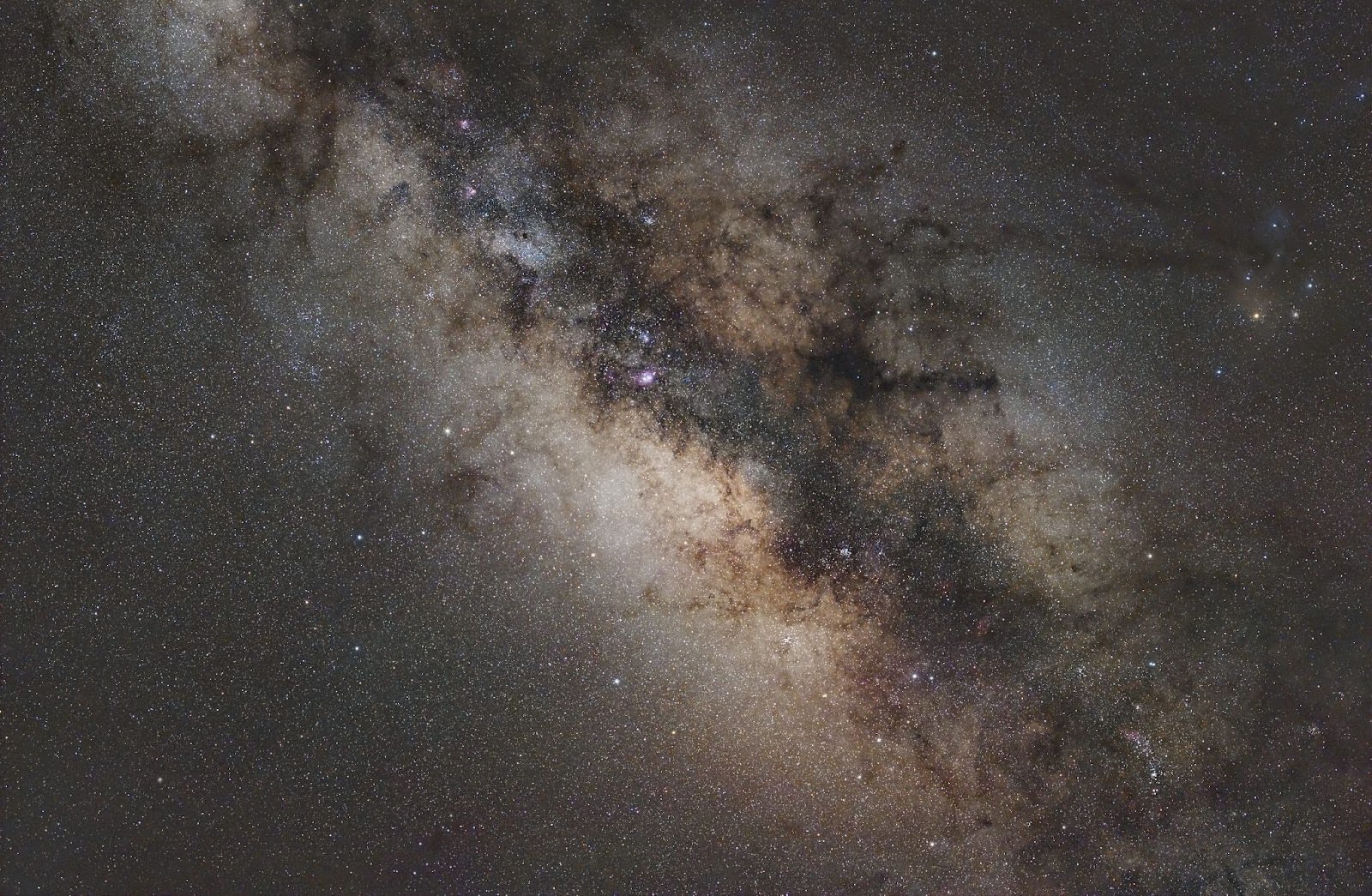 After GraXpert
Click to Enlarge Image
After GraXpert
Click to Enlarge Image
Siril
Siril is an astronomical image processing tool tailored for noise reduction and improving the signal-to-noise ratio in images from multiple captures, essential tasks in astronomy. Unlike more expensive processors like PixInsight and Photoshop, Siril offers powerful features for free. It can automatically or manually align, stack, and enhance pictures from various file formats, including image sequence files like films and SER files. This capability makes Siril a cost-effective alternative for astronomers looking to achieve high-quality image processing without the expense of premium software. Siril, plus GraXpert, can make for absolutely stunning images that will completely make or break your astrophotography. Remember, hardware is one thing, but ultimately what will make your images shine is your ability to post-process your images!
Astrophotography is no longer an exclusive hobby for those with deep pockets. With the right equipment, techniques, and resources, anyone can capture breathtaking images of the night sky. By investing in budget-friendly mounts, cameras, and telescopes and utilizing powerful, free post-processing software like GraXpert and Siril, you can achieve professional-quality results without significant financial outlay. Embrace the technological advancements and supportive online communities to start your journey in astrophotography today.
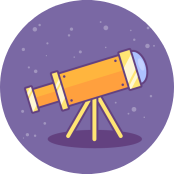
Learn More
For more tips, tutorials, and community support, visit High Point Scientific's AstronomyHub and join a thriving community of passionate astronomers and astrophotographers. Your next celestial masterpiece awaits!







